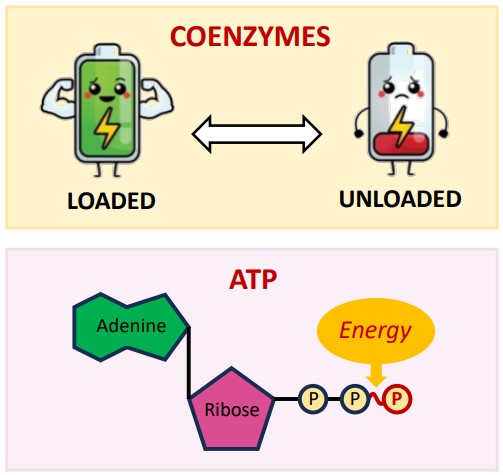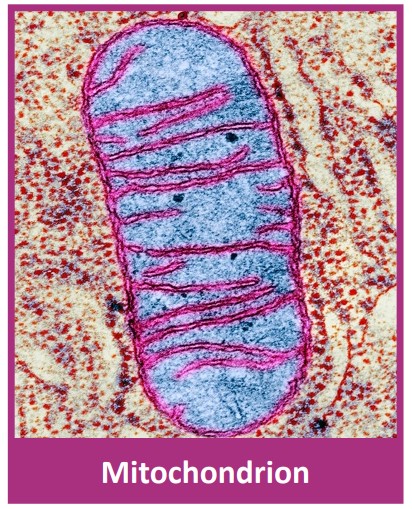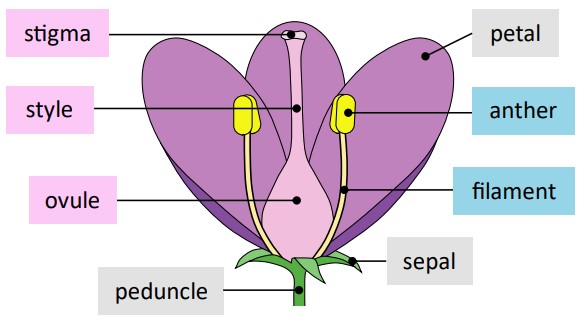Your Complete Guide to ATP, Energy Pathways, and Respiration Systems
Ever wondered how your cells keep you alive every second of every day? From contracting muscles to sending nerve signals and building DNA, none of it happens without energy. But where does that energy come from—and how do your cells access it? Welcome to the world of cell respiration, the engine room of life.
🔋 ATP: The Energy Currency of the Cell (C1.2.1)
What is ATP?

ATP, or adenosine triphosphate, is often called the “energy currency” of the cell. Why? Because it’s the immediate, usable form of energy your cells rely on for nearly every function.
Structure: ATP is a coenzyme made of three parts:
Adenine (a nitrogenous base)
Ribose (a sugar)
Three phosphate groups
Energy Storage: The key lies in those phosphate bonds. Holding three negatively charged phosphate groups together requires energy—lots of it. When ATP is broken down (hydrolyzed), energy is released.
ATP → ADP + Pi: How Energy is Released (C1.2.3)
When ATP is hydrolyzed:
ATP → ADP + Pi + energy
ADP = Adenosine diphosphate
Pi = Inorganic phosphate
Energy Released: Used for cellular work
This reaction is reversible, meaning ADP can be “recharged” back into ATP, much like a reusable battery.
⚙️ What Does ATP Power? (C1.2.2)
ATP fuels a wide range of cellular processes, all vital for survival. Here’s where that energy goes:
| Cellular Process | Example |
|---|---|
| Anabolism (building molecules) | Protein synthesis, DNA replication |
| Active Transport | Sodium-potassium pumps in nerve cells |
| Cell Movement | Muscle contraction, movement of chromosomes |
| Vesicle Transport | Endocytosis and exocytosis |
🔄 Cell Respiration: Converting Stored Energy into ATP (C1.2.4)
What is Cellular Respiration?
Cell respiration is the controlled breakdown of organic molecules to release energy, which is then used to produce ATP. Think of it like cashing a paycheck (glucose) into spendable money (ATP).
What Fuels Respiration?
Carbohydrates
Main fuel: Glucose (C₆H₁₂O₆)
Easily broken down, readily available
Fats (Triglycerides)
More ATP per gram than carbs
But harder to transport and digest
Proteins
Backup fuel source
Produces nitrogenous waste (toxic if not removed)
🧪 Pathways of Respiration: Aerobic vs Anaerobic (C1.2.5)
| Feature | Aerobic Respiration | Anaerobic Respiration |
|---|---|---|
| Oxygen required? | Yes | No |
| ATP yield | High (around 30–32 ATP per glucose) | Low (2 ATP per glucose) |
| Where it happens | Mitochondria | Cytosol (cytoplasm) |
| Processes involved | Glycolysis → Krebs Cycle → ETC | Glycolysis → Fermentation |
| End products | CO₂ and H₂O | Lactic acid (animals) / Ethanol + CO₂ (yeast) |
Anaerobic Respiration in Humans
Occurs during intense exercise when oxygen is limited
Converts glucose into lactic acid
Provides rapid but short-term energy (e.g., sprinting)

Aerobic Respiration
Requires oxygen
Fully breaks down glucose
Maximizes ATP yield—ideal for endurance activities like long-distance running

🧬 Mitochondria: The Powerhouse of the Cell
Structure and Function
Mitochondria are specialized organelles for aerobic respiration. Their unique features optimize ATP production:
Double membrane: Outer smooth; inner highly folded (forms cristae)
Matrix: Inner fluid-filled space containing enzymes for the Krebs cycle
Cristae: Increase surface area for electron transport chain (ETC)
Evolutionary Note
Mitochondria evolved from aerobic bacteria via endosymbiosis
Evidence:
Own circular DNA
70S ribosomes (like prokaryotes)
Double membrane

📈 Factors Affecting Respiration Rate (C1.2.6)
Several variables influence how fast cells can generate ATP:
1. Temperature
Enzymes involved in respiration work best at optimal temperatures (around 37°C in humans)
Too cold = slowed enzymes
Too hot = enzyme denaturation
2. pH
Most respiratory enzymes prefer neutral to slightly alkaline conditions
Too acidic or too basic? Enzyme activity declines
3. Substrate Concentration
More glucose or oxygen = higher rate of respiration—up to a saturation point
4. Oxygen Availability
Critical for aerobic respiration
Low oxygen = shift to anaerobic pathway = less ATP
🧠 Summary Table: Key Comparisons
| Concept | Key Point |
|---|---|
| ATP Function | Provides immediate energy for all cellular activities |
| ATP Formation | Energy from glucose used to convert ADP + Pi into ATP |
| Aerobic Respiration | High ATP yield, requires oxygen, happens in mitochondria |
| Anaerobic Respiration | Low ATP yield, no oxygen needed, happens in cytosol |
| Mitochondria Role | Host site for aerobic respiration; evolved via endosymbiosis |
| Rate Influencers | Temp, pH, glucose, oxygen availability all impact respiration speed |
❓ IB Student FAQ: Cell Respiration Edition
Anaerobic is faster but inefficient. Aerobic respiration makes much more ATP per glucose molecule—better for long-term energy needs.
It’s transported to the liver, where it’s converted back into pyruvate once oxygen becomes available.
No. Triglycerides require oxygen to be metabolized, so they’re only used in aerobic respiration.
Glycolysis splits glucose into pyruvate in the cytosol (no oxygen needed). The Krebs cycle occurs in mitochondria and needs oxygen to fully extract energy.
Photosynthesis stores energy in glucose (anabolic), while cellular respiration releases that energy (catabolic). They’re essentially reverse processes.



